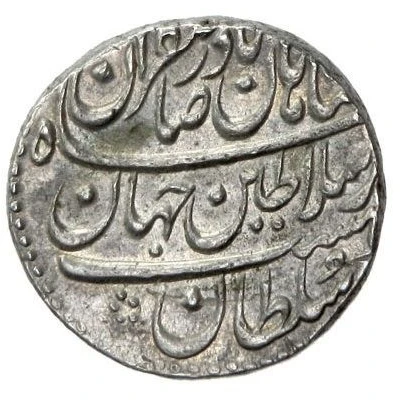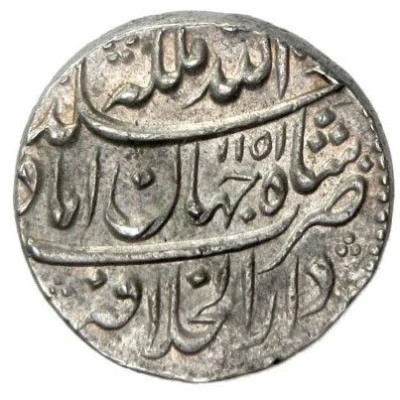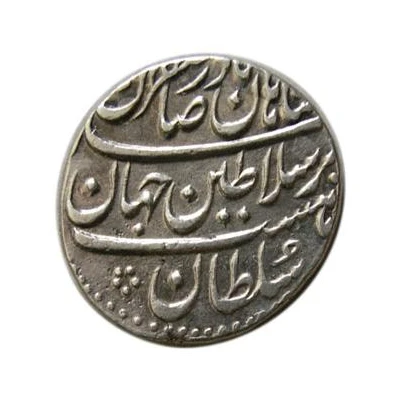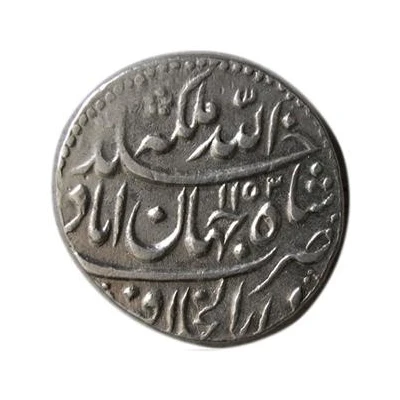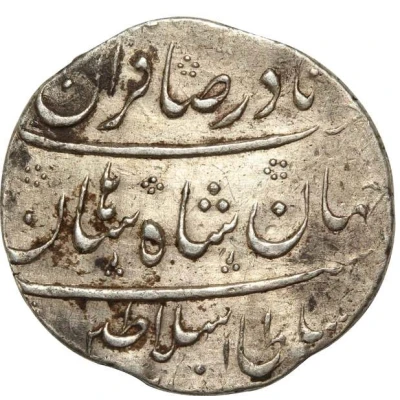
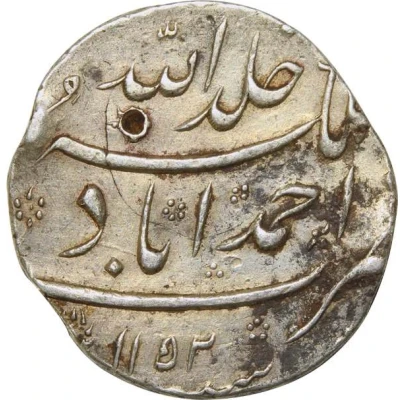

© سامعی (CC BY)
1 Rupee - Nader Afshar Ahmadabad
1152 (1739) year| Silver | 11.51 g | 25.67 mm |
| Issuer | Iran |
|---|---|
| Shah | Nader Shah Afshar (1736-1747) |
| Type | Standard circulation coin |
| Year | 1152 (1739) |
| Calendar | Islamic (Hijri) |
| Value | 10 Shahi |
| Currency | Shahi (1501-1798) |
| Composition | Silver |
| Weight | 11.51 g |
| Diameter | 25.67 mm |
| Shape | Round (irregular) |
| Orientation | Coin alignment ↑↓ |
| Demonetized | Yes |
| Updated | 2024-10-05 |
| Numista | N#195185 |
|---|---|
| Rarity index | 100% |
Reverse
Sana 1152 hijri, zarb Ahmadabad in middle, on top khuld allahu mulkahu
Lettering:
خلد الله ملکه
ضرب احمداباد
سنه ۱۱٥۲
Edge
Plain
Comment
Nadir Shah Afshar, the Shah of Iran and the founder of the Afsharid dynasty, invaded India and brought about a boisterous and damaging mark on the history of Mughal India. There was a void in the Mughal Empire after the death of Aurangzeb, and his successors could not fill his place. There were frequent fights for the throne and the ministers betrayed each other, which led into the weakening of the mighty Mughal Empire. Nadir Shah, during that time, became the ruler of Persia (Iran), after being a chief of dacoits. He considered this period of weak Mughal Empire as the right opportunity to seize power and invade Hindustan in February 1739.The Mughal army was defeated at the Battle of Karnal. He captured the western frontiers of Mughal Empire such as Kabul, Ghazni, Lahore in 1739. When Nadir Shah crossed Khyber Pass, the Governor of Punjab requested for the strengthening of the army force in Punjab to the Mughal emperor. But Muhammad Shah, the Mughal emperor of Dehli, did not pay heed to his request. Soon Nadir Shah entered Punjab with great force and then Muhammad Shah sent the Mughal forces, led by Khan Dauran and Nizam-ul-Mulk, to fight against Nadir Shah. However, the two declined, and so Muhammad Shah led the forces himself. The two forces of Nadir Shah and Muhammad Shah met at Karnal. At the battle of Karnal on 13 February 1739, Nadir Shah easily outnumbered the Mughal forces. The battle lasted for less than three hours and the Mughal emperor, Muhammad Shah surrendered. Both the rulers now entered Delhi on 12 March 1739 and Dehli was handed over to Nadir Shah, along with all its treasures &declared him the King.
The terror caused by Nadir in Dehli spread quickly to other parts of Hindustan such as Ahmadabad, Azimabad, Bhakkar, Lahore, Muhammadabad Banaras, Multan, Murshidabad, Peshawar, Qandahar, Sahrind, Sind, Tatta, Derajat, Najibabad &Shahjahanabad (Delhi). During wars Islamic rulers had a running mint and whenever they conquered a new city, they issued coins usually changing the name of the city. It is said that first acts of every Muslim king were to order the Qutba to be read in his own name and to strike coins.
Interesting fact
The 1 Rupee coin from Iran, minted during the reign of Nader Afshar in 1152 (1739), was made of silver and weighed 11.51 grams. This coin was significant because it was one of the first coins to be issued by the Afsharid dynasty, which was established by Nader Shah after he overthrew the Safavid dynasty in 1732. The coin's design featured the name of the ruler, Nader Afshar, and the date of minting, 1152, in the Persian calendar. It's interesting to note that the use of silver in coinage was a common practice in ancient Persia, and this coin is a testament to that tradition.
